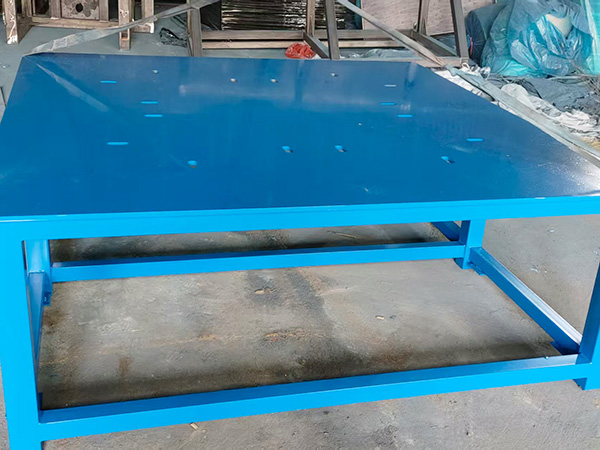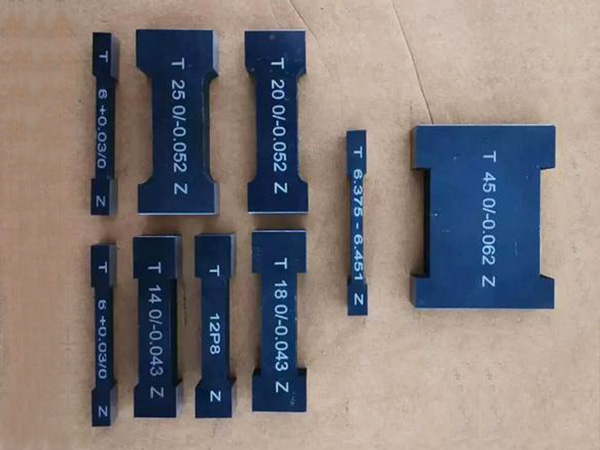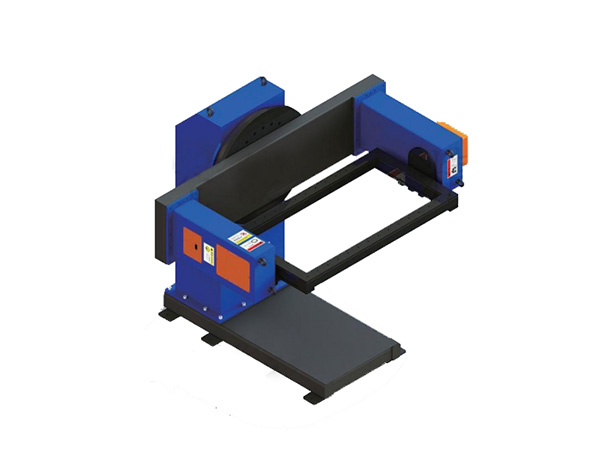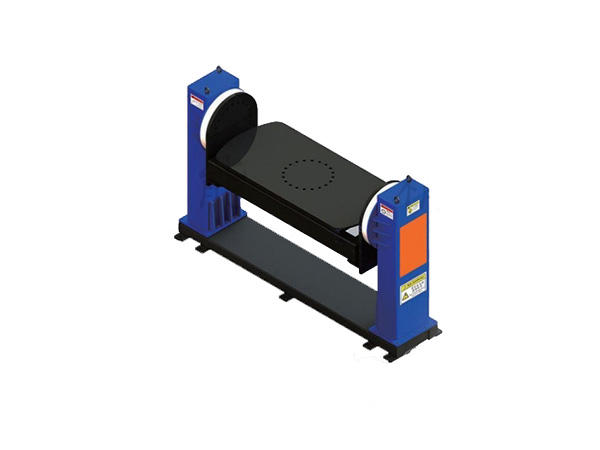- Navigation -
NEWS DETAILS
NEWS INFORMATION
Effective Anti-Rust Treatments for Cast Iron Surface Plates
AUTHOR:Bozhong Tool DATE:2025-11-22 10:16:06 HITS:152
A precision-grade Cast Iron Surface Plate is one of the most important tools in any workshop focused on measurement, calibration, or inspection tasks. Its dimensional stability and wear resistance make it indispensable for high-accuracy work, whether in manufacturing environments, production settings, or individual fabrication shops. However, despite its durability, cast iron remains vulnerable to corrosion if exposed to moisture, contaminants, or improper handling. Rust not only affects the surface appearance but can compromise flatness and measurement accuracy over time.
To keep your Cast Iron Surface Plate in optimal condition, it’s essential to understand and apply proven anti-rust treatments. The following guide outlines effective prevention methods and long-term care strategies suitable for various industries and workshop environments.


Why Cast Iron Surface Plates Are Sensitive to Rust
Understanding why rust forms so easily on cast iron surfaces helps ensure you apply the right protective measures.
1. Material Composition
Cast iron contains significant amounts of carbon and trace impurities that react readily with moisture and oxygen, accelerating oxidation.
2. Humidity and Temperature Fluctuations
Workshops without climate control often experience condensation cycles, especially during changes in season. Cast iron absorbs moisture quickly, making it prone to surface rust.
3. Handling and Fingerprints
Even brief contact with bare hands can leave behind oils, salts, and moisture—creating localized rust spots if not cleaned promptly.
4. Residual Oils and Contaminants
Old cutting fluids or dirty oils tend to hold moisture, forming a corrosive film that encourages rust formation.
With these causes in mind, prevention becomes easier and more targeted.
Most Effective Anti-Rust Treatments for Cast Iron Surface Plates
1. Consistent Cleaning with Safe Solvents
Routine cleaning is the starting point of rust prevention.
·Use a neutral, non-acidic industrial solvent
·Avoid strong chemicals that can alter the plate’s surface texture
·Wipe thoroughly using lint-free cloths
·Immediately dry the entire surface after cleaning
Keeping the surface free of residue prevents corrosion from forming underneath contaminants.
2. Protective Oil Films for Daily Use
A light, even layer of rust-inhibiting oil remains one of the most commonly recommended treatments for cast iron surfaces.
Suitable options include:
·Light mineral-based machine oils
·General-purpose rust-prevention lubricants
·Toolroom anti-corrosion oils
Spread a thin coating using a clean cloth—enough to protect, but not so thick that dust accumulates.
Key advantages:
·Creates a barrier against airborne moisture
·Simple to apply and maintain
·Safe for daily-use surface plates
This method is ideal for workshops with varying levels of humidity.
3. Long-Lasting Wax Coatings
Waxing a Cast Iron Surface Plate provides a durable, residue-free layer that offers excellent protection during long-term storage or infrequent use.
Effective wax types include:
·Microcrystalline wax
·High-grade paraffin wax mixtures
·Industrial tool preservation wax
After applying and buffing, the wax leaves a smooth, water-resistant layer that does not evaporate.
Why it works well:
·Longer protection intervals
·Does not attract dust like oil
·Safe for precision surfaces used intermittently
Wax coatings are especially useful for production facilities or manufacturers storing plates between shifts or batches.


4. Water-Displacing Sprays
Water-displacing agents are valuable in high-humidity environments or workshops near coastal areas.
These sprays:
·Push moisture away from the surface
·Create a thin, protective film
·Can be used after cleaning, before oiling, or prior to storage
They provide an added layer of defense when combined with other treatments.
5. Controlling the Workshop Environment
Anti-rust products alone are not enough if the environment encourages corrosion.
Ideal storage conditions include:
·Humidity maintained around or below 60%
·A stable indoor temperature
·Adequate air circulation
·A cool, dry location away from coolant mist or grinding dust
For production facilities or manufacturers relying on multiple Cast Iron Surface Plates, investing in humidity control can significantly reduce maintenance needs.
6. Proper Storage and Protective Coverings
When not in use:
·Cover the plate with breathable cloth or felt
·Avoid plastic sheeting, which can trap moisture
·Keep liquids, cold parts, or damp tools away from the surface
·Ensure the surface is clean before covering
Consistent storage habits are just as important as protective coatings.
How to Safely Remove Rust if It Appears
If rust has already formed, removal must be done cautiously to avoid altering the flatness of the plate.
Preferred methods include:
·Mild rust remover solutions
·Fine-grade oil stones for localized spots
·Professional scraping or resurfacing by a trained technician
Avoid sanding or grinding, as these can permanently damage the accuracy of the plate.
Choosing the Right Anti-Rust Strategy
For everyday workshop use:
Light oil coatings + daily cleaning offer reliable protection.
For long-term storage:
Wax coatings + breathable covers provide durable, low-maintenance defense.
For manufacturers or production facilities:
Climate control + regular maintenance ensure the longest lifespan.
Final Thoughts: Maintaining Your Cast Iron Surface Plate
A dependable Cast Iron Surface Plate is central to precise measurement and inspection work, and protecting it from rust is essential for long-term accuracy. With proper cleaning, protective coatings, environmental control, and good storage habits, you can ensure your surface plate remains stable and reliable for years—even in demanding production environments.
Whether you rely on the plate for calibration, layout, inspection, or manufacturing tasks, consistent anti-rust treatment will preserve its performance and extend its service life.
References
GB/T 7714:Liu J, Wang B, Chen T, et al. The Effect of Corrosion Inhibitors on the Corrosion Behavior of Ductile Cast Iron[J]. Metals, 2025, 15(1): 70.
MLA:Liu, Jing, et al. "The Effect of Corrosion Inhibitors on the Corrosion Behavior of Ductile Cast Iron." Metals 15.1 (2025): 70.
APA:Liu, J., Wang, B., Chen, T., Hao, L., Wu, J., & Liu, C. (2025). The Effect of Corrosion Inhibitors on the Corrosion Behavior of Ductile Cast Iron. Metals, 15(1), 70.
-
Effective Anti-Rust Treatments for Cast Iron Surface Plates
-
Portable Welding Tables vs. Fixed Models: Which Option Fits Your Workstyle Best?
-
Sand Casting vs. Die Casting: Best Method for Machine Tool Parts
-
Long-Term Methods to Maintain Granite Platform Flatness
-
Accurate Methods to Check the Flatness of Cast Iron Surface Plates
-
Pro Tips and Creative Hacks for Using a Welding Table in DIY Metalwork
Botou Bozhong Precision Machine Tool Co., Ltd.
Copyright © 2025-2026 https://www.bozhong-weldingtable.com. All Rights Reserved Botou Bozhong Precision Machine Tool Co., Ltd.Copyright





 Current Location:
Current Location:




